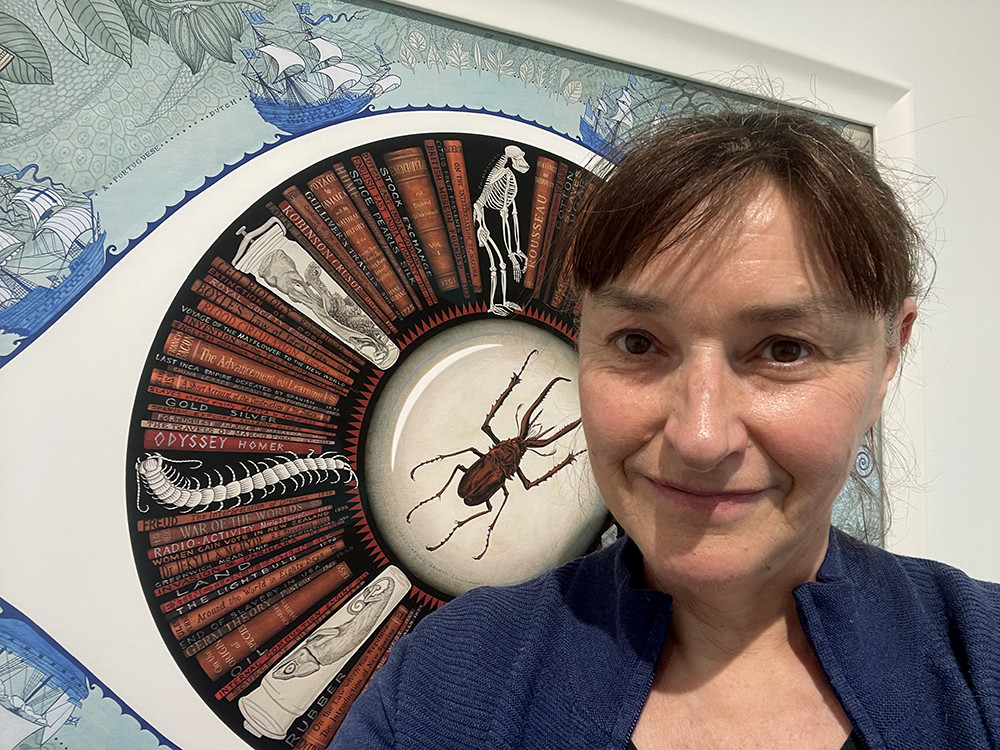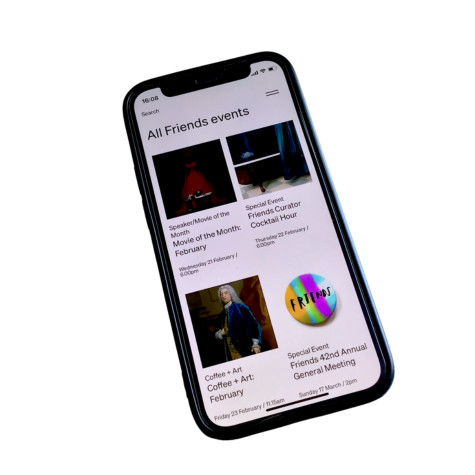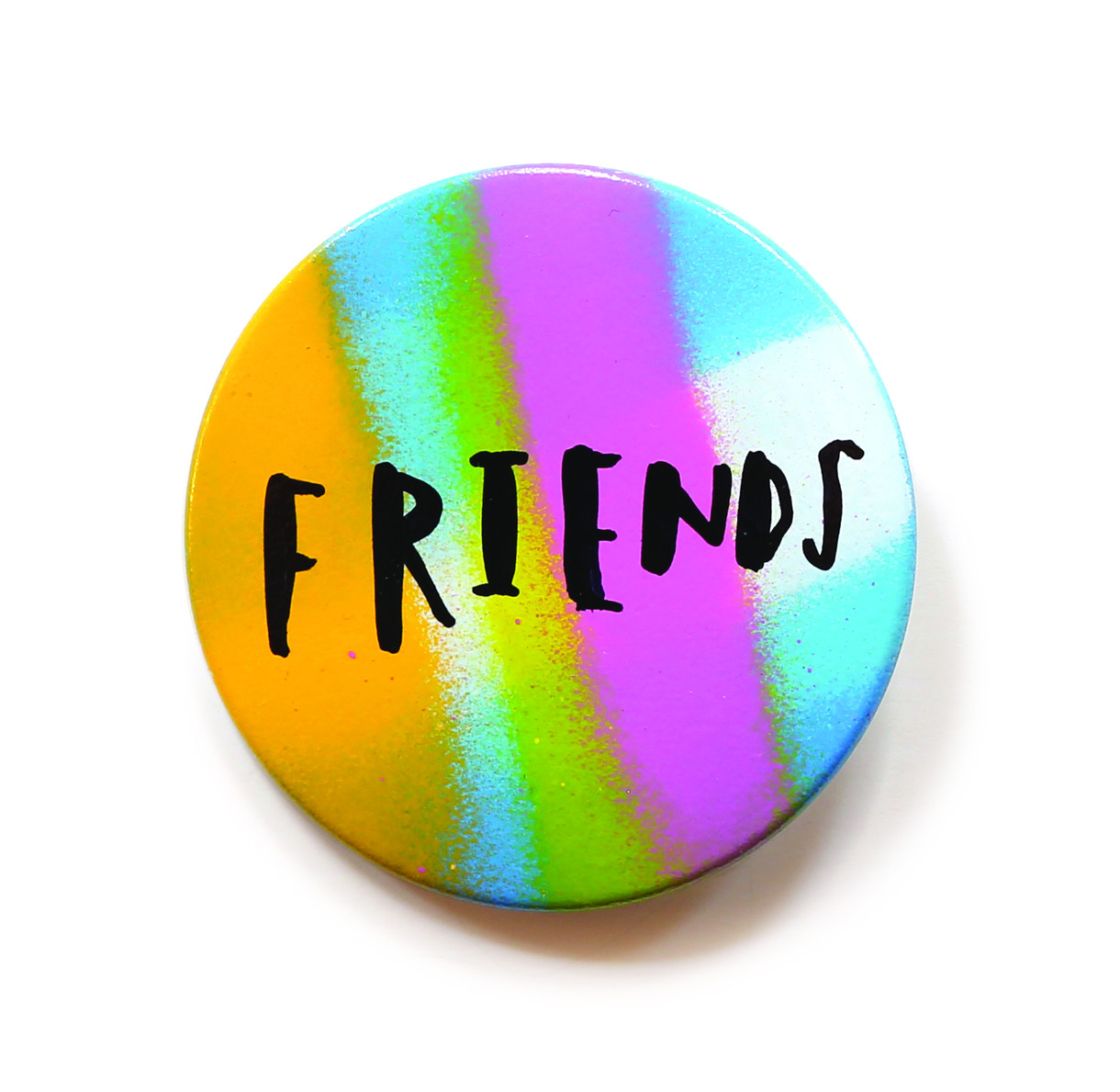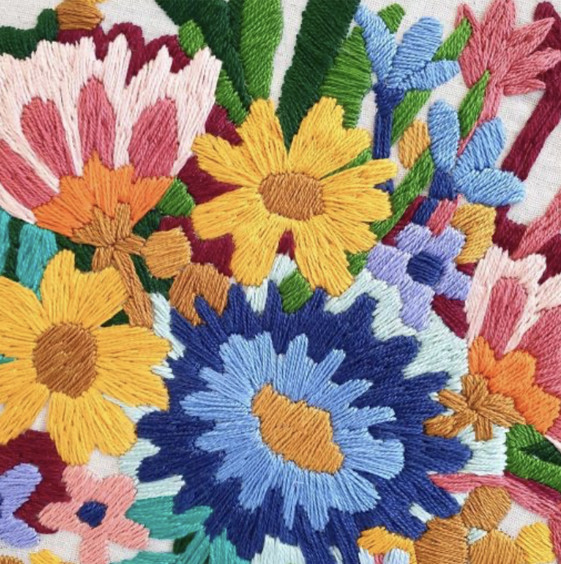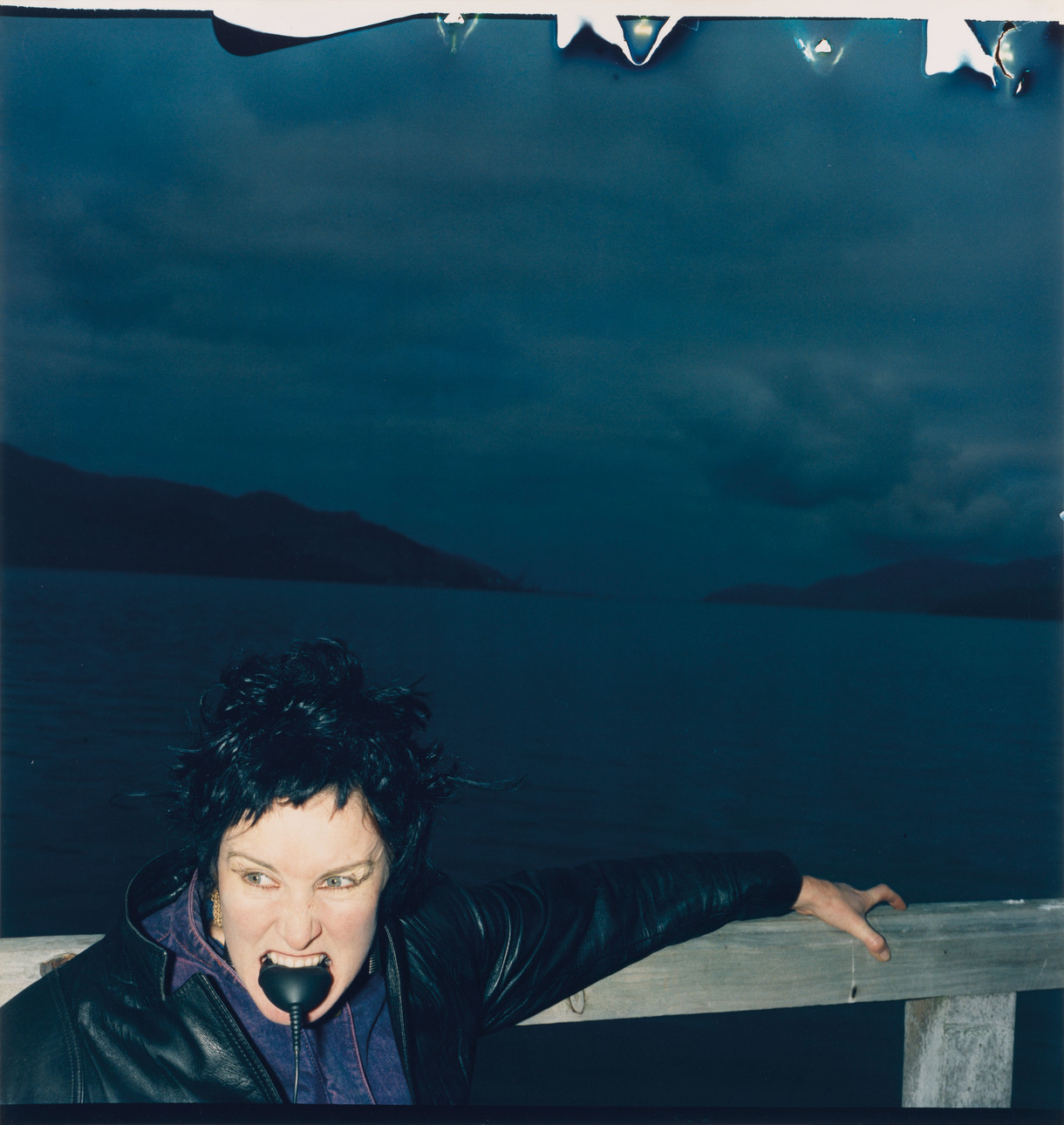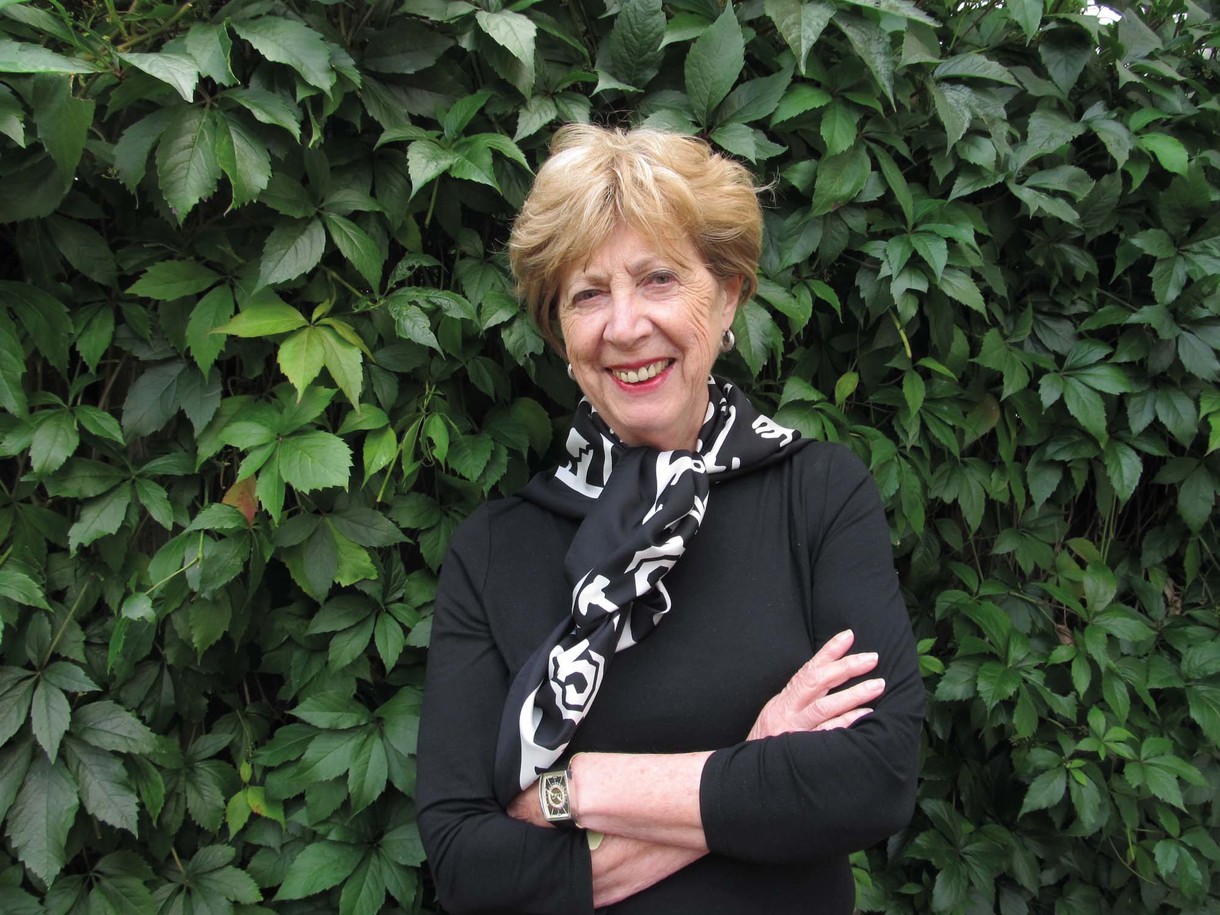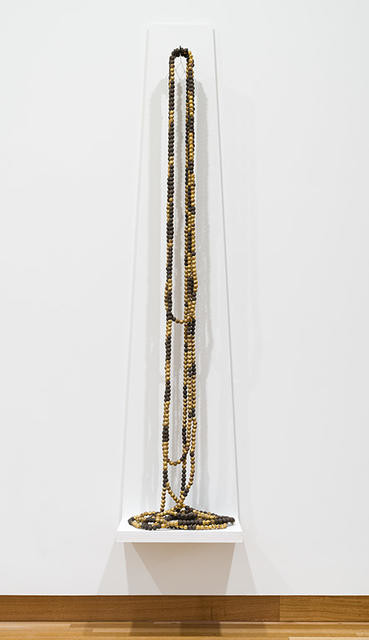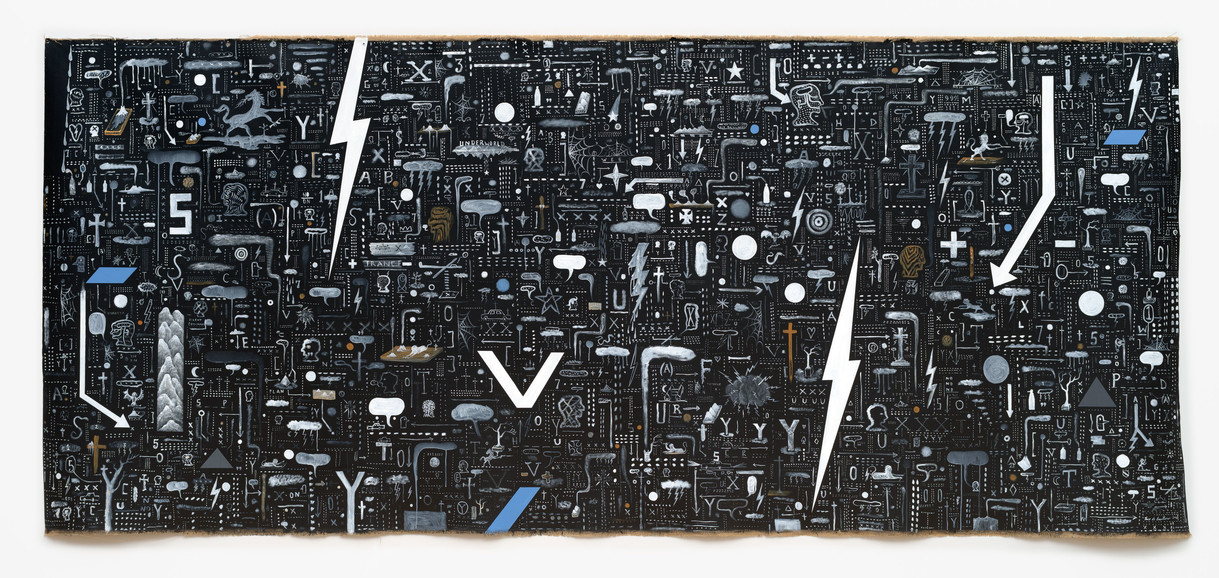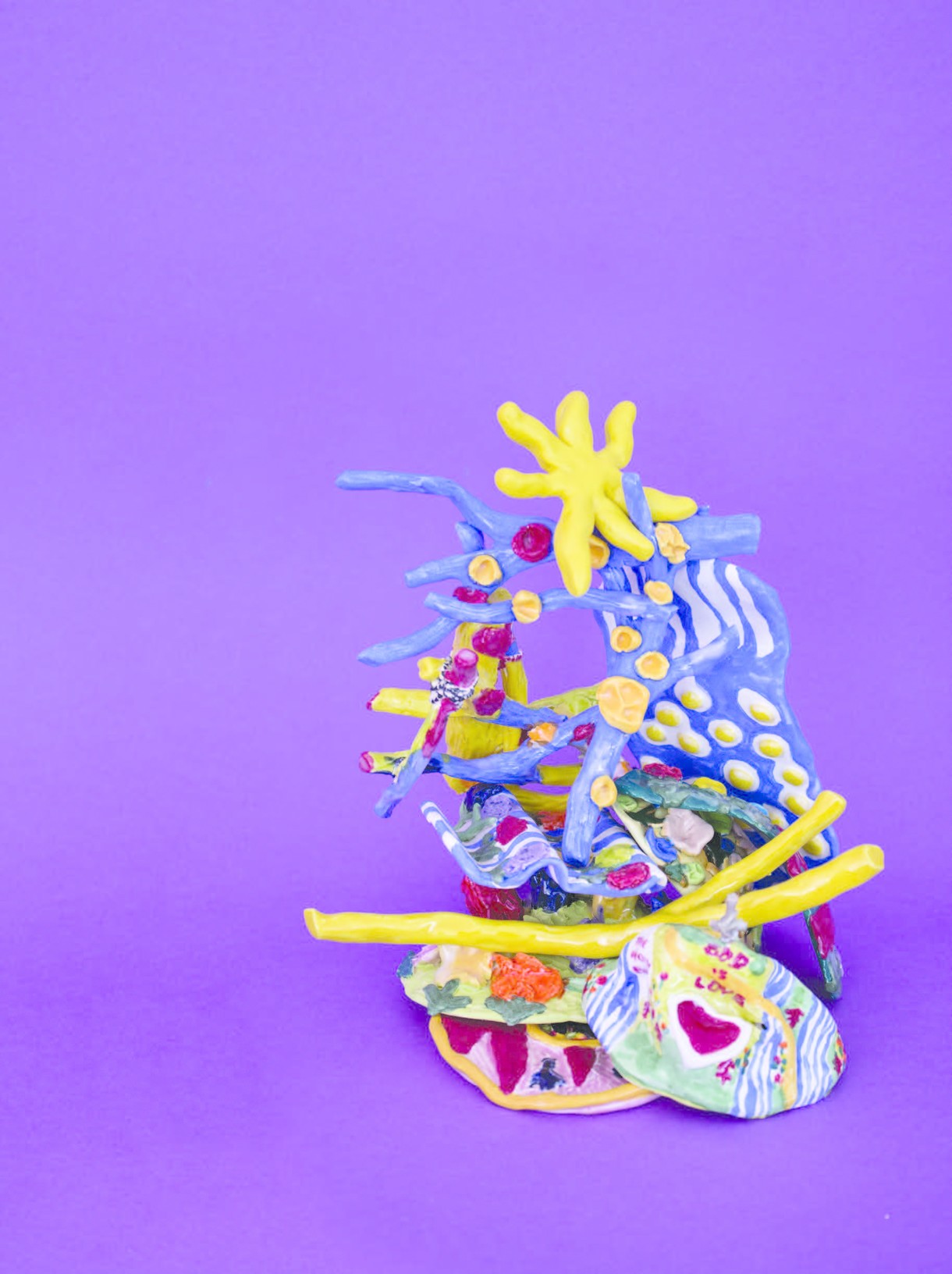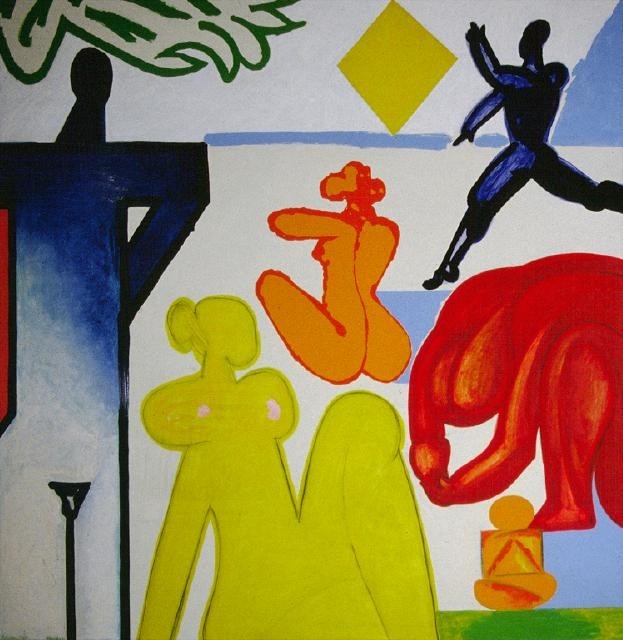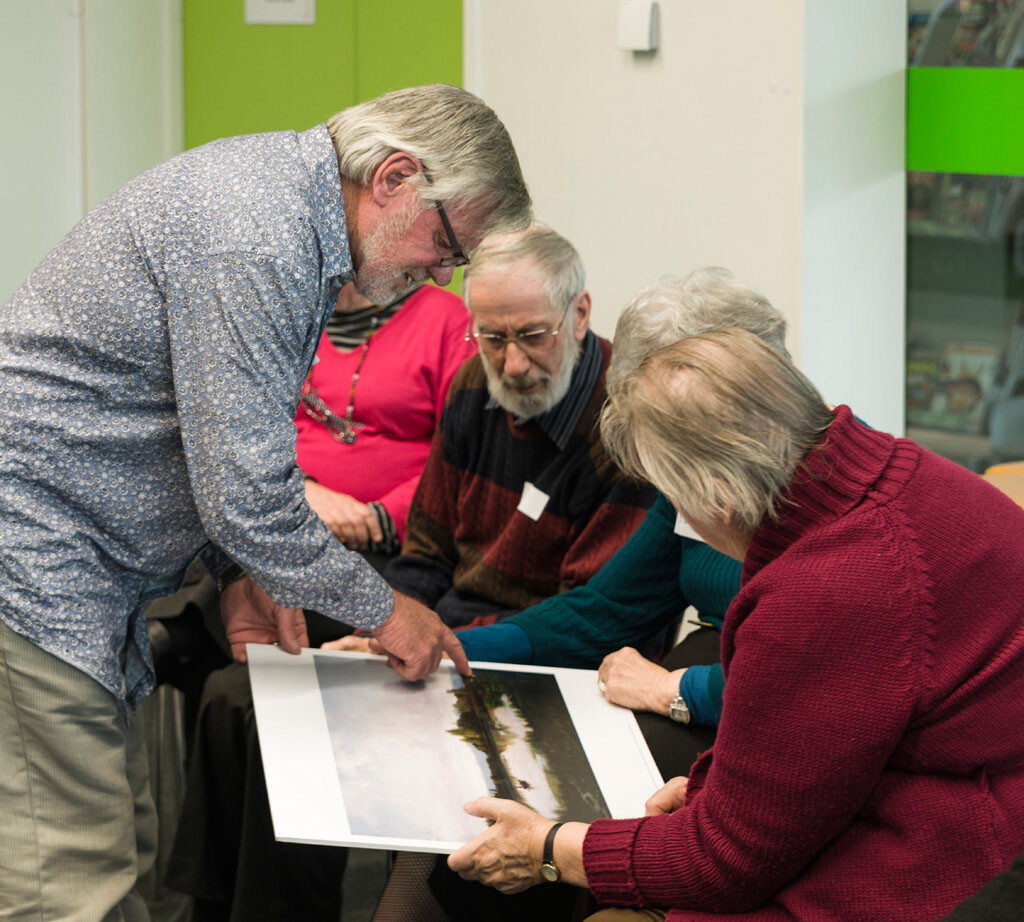B.
The Art Whisperer
Interview
Christchurch Art Gallery volunteer guide Bella Boyd talks about her love of guiding, her favourite works in the Gallery collection and interpreting art with poetry.
I've had a lifelong interest in art. My parents owned Milford's Furnishing Fashions in Mount Maunganui in the 1950s. They framed pictures and sold them around the Bay of Plenty. I grew up with art catalogues always around and played with them where others might play with toys.
I worked as a medical practitioner for 40 years, so I'm not a visual artist myself, I only have words. But I often have an ekphrastic response to art, so many times when we are being taught about a new exhibition at the Gallery, I'm busy writing a poem inspired by the works of art.
In the 80s I was part of an ekphrastic exhibition in Parnell called Woman's Spirit, a collaboration between poets and artists. It was a wonderful time in Auckland, with art, music and poetry buzzing off each other. I really enjoy forays into cross genre collaborations. There is a long poem in my latest book that I'd love to see performed.
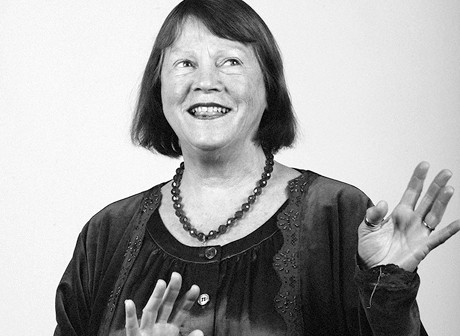
Christchurch Art Gallery volunteer guide Bella Boyd
I've had a lifelong interest in art. My parents owned Milford's Furnishing Fashions in Mount Maunganui in the 1950s. They framed pictures and sold them around the Bay of Plenty. I grew up with art catalogues always around and played with them where others might play with toys.
I worked as a medical practitioner for 40 years, so I'm not a visual artist myself, I only have words. But I often have an ekphrastic response to art, so many times when we are being taught about a new exhibition at the Gallery, I'm busy writing a poem inspired by the works of art.
In the 80s I was part of an ekphrastic exhibition in Parnell called Woman's Spirit, a collaboration between poets and artists. It was a wonderful time in Auckland, with art, music and poetry buzzing off each other. I really enjoy forays into cross genre collaborations. There is a long poem in my latest book that I'd love to see performed.

Lonnie Hutchinson sista7 2003. Black building paper. Collection of Christchurch Art Gallery 2003

Petrus van der Velden The Dutch funeral 1875. Oil on canvas. Collection of Christchurch Art Gallery. Gifted by Henry Charles Drury van Asch, 1932
There are a few old friends I'm looking forward to seeing when the Gallery reopens. On a personal level, probably because my husband died so suddenly, the Dutch Funeral speaks to me in a deeper capacity than it ever did. The brilliance of that work, the layering, the horizons, there is so much unspoken conveyed.
One of my other favourite pieces is Summer Morn by Evelyn Page. It shows a woman naked on the bank of a river in Karamea and two people in a boat. One of the people in the boat is Page's husband Fred in female dress with a parasol. I just think it's so humorous and so gorgeous. It has dreamlike qualities; that dappled light, the gentleness. It captures a lovely moment. We're one of the party sitting out on the bank in the sun watching.
If I was giving advice to a new volunteer guide I'd say guides don't need to have absolute knowledge. One of my barriers to becoming a guide was that I had an interest in art but I didn't know that much. Ann taught me that guiding is about enabling people to enter a work and engage with a work. Phrases like: "What do you think is happening here?" or: "Tell me about this one?" can start a conversation, then you can add and embellish. Plus you've really got to be prepared to spend time preparing a tour.
A wonderful camaraderie develops between the guides, it's like another extended family. A lot of us know each other in other capacities, and there are plenty of informal gatherings for coffee where people troop along. It's a great network. People really care for each other.
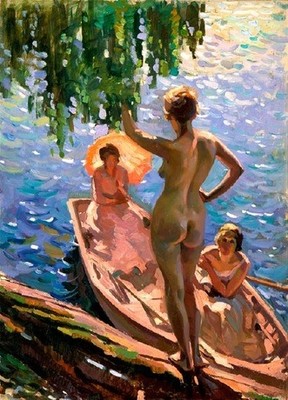
Evelyn Page Summer Morn 1929. Oil on canvas. Collection of Christchurch Art Gallery. E Rosa Sawtell Bequest, 1940. Reproduced courtesy of Sebastian Page and Anna Wilson
I have been a Gallery guide for 15 years. I had heard about the guides' reputation before I moved to Christchurch, and so when I arrived in 1996 I signed up to become a guide. I was on the waiting list for three years until the Gallery rang me up and said now's the time to train
The training is quite a commitment. I went along every Thursday for thirteen weeks and of course there was always homework. I was trained by Anne Betts. She's a natural teacher with many years' experience and really an enlightened person. She knew all the local artists, so she was such a rich source of information, she didn't look it up in a book; it just came out of the pores of her skin.
I love working in the education centre with children. You are working alongside them, rather than teaching them. I remember showing groups of kids Lonnie Hutchinson's work sista7 and getting them to stop when they got into the dark exhibition space and look at the work from a distance, then go closer for a difference in perspective. Sometimes we'd get the kids to lie on the floor and look at the work from there. And their enthusiasm just... well.... they teach you things, that's what I love. That's enough in itself to keep me guiding.
Then the project with Alzheimers Canterbury started, and that blew me away because people who can't find their way home can access memories and expertise in looking at works of art. I remember particularly one lovely man who had had nasty falls and was very withdrawn through the whole lecture. Then I showed him a particular work and he sat up and spoke confidently about the construction of that work, and revealed another dimension to the piece that I hadn't considered.
I think the project is so worthwhile. When people with Alzheimers have conversations about art, their sense of wellbeing, their joy at being able to focus on something and have an adult conversation is palpable. Especially in the early days of dementia, people can be depressed because of what is happening to them, their self-worth is often in question, and artwork can evoke happier emotions. I'm looking for more training in this field, and I'd be happy to travel. I haven't been able to find the right training yet, but if I keep putting feelers out I'll find something, even if it's only a weekend workshop.



